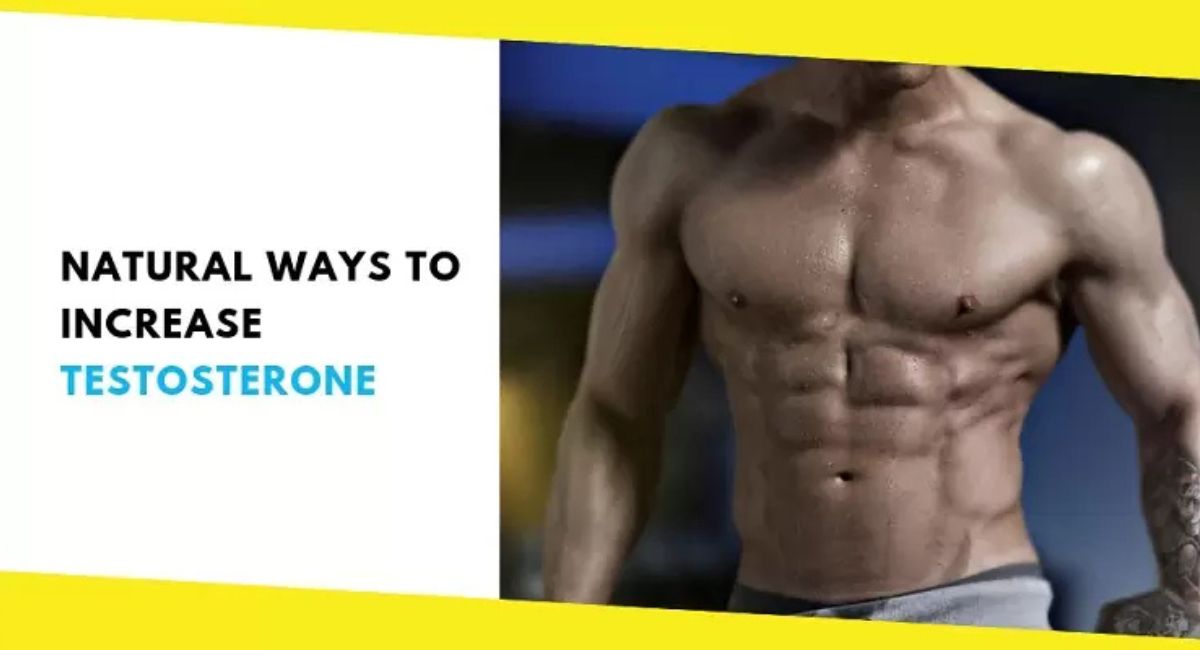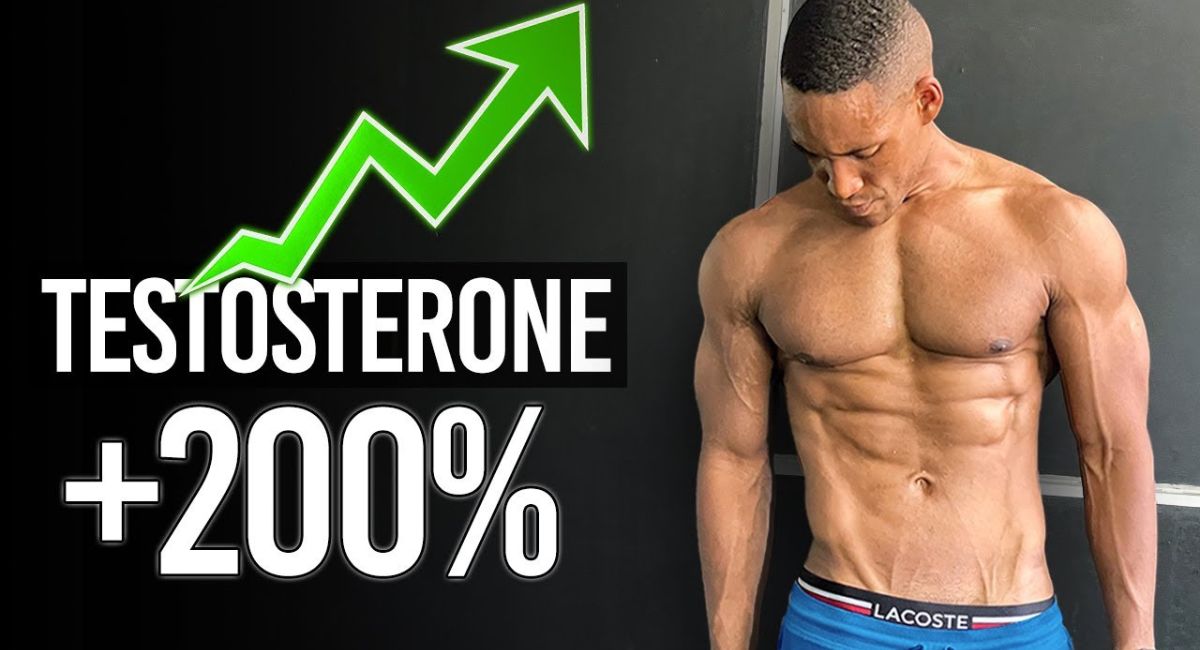Ever wondered why your workouts don’t always leave you feeling stronger, more energetic, or even more confident? Many people quietly ask themselves, “Does Exercise Increase Testosterone?” because deep down they’re hoping there’s a natural way to boost energy, improve mood, and even support sexual wellness without turning to pills or treatments. That curiosity often comes from frustration—wanting better results in the gym or in life, but not knowing if exercise truly changes hormone levels.
In this blog, we’ll clear up the confusion and dive into how different workouts affect testosterone. You’ll learn what types of exercise help most, what lifestyle factors matter, and how to naturally support your hormone health. If you’ve been searching for straight answers and practical tips, you’ve come to the right place—let’s get started.
What Is Testosterone and Why Does It Matter?
Testosterone is a hormone that both men and women produce, though men have much higher levels. It plays a key role in muscle strength, bone density, red blood cell production, mood, and sex drive. When testosterone levels dip, it often leads to issues like fatigue, poor performance in the gym, and problems in the bedroom. Doctors often connect erectile dysfunction and testosterone because lower hormones reduce blood flow, making intimacy difficult.
In men, testosterone is mostly produced in the testes under the control of the pituitary gland and testosterone production system. In women, the adrenal glands create smaller amounts. Testosterone is more than a sex hormone; it influences confidence, motivation, and even mental sharpness. That’s why low levels can affect not only the body but also the mind, leading to stress and frustration.

How Exercise Affects Testosterone Levels
Researchers have long studied how exercise stimulates hormones. When you train, your body doesn’t just build muscle—it also triggers a hormonal reaction. For instance, serotonin and oxytocin release during workouts are often called the happy hormones (serotonin, oxytocin), which improve mood and indirectly help testosterone production. Short, high-intensity workouts usually cause a temporary spike in testosterone, while long-term training helps balance your entire hormonal system.
But this balance depends on intensity and recovery. Overtraining without enough rest may actually lower testosterone levels. On the other hand, steady training routines improve mood, body composition, and mental health and testosterone balance. Exercise isn’t a one-day fix; it works as a natural testosterone booster when you stick with it consistently.
Best Types of Exercise to Boost Testosterone
Not all workouts give the same benefits. Heavy resistance training, especially compound lifts like squats and deadlifts, are proven to raise testosterone more than long, light workouts. A 12-week study in the USA showed that men who focused on weightlifting improved their hormone profile compared to those who only did cardio. Strength training works because it challenges larger muscle groups, creating a bigger hormonal response.
Another great method is High-Intensity Interval Training (HIIT). Short bursts of intense activity followed by rest push your body to adapt quickly. Compared to steady jogging, HIIT workouts provide stronger boosts in exercise and libido. These sessions are tough, but they maximize gains without risking weight and hormone imbalance caused by excessive cardio.
Running and Testosterone: Does It Really Help?
Many wonder, “Does running increase testosterone?” The answer depends on how you run. Sprinting or short-distance running often increases testosterone because it’s intense and short-lived. On the other hand, long-distance running sometimes lowers it due to high stress and energy demands. That’s why marathon runners sometimes experience low sex drive or even insomnia and sleep problems after extreme training.
Still, moderate running brings many benefits. It burns fat, lowers stress, and strengthens the heart. In fact, running improves stamina, enhances blood circulation, and supports blood flow and sex drive. For men struggling with weight issues, running helps prevent obesity and hormone imbalance, which are major testosterone deficiency causes. Balanced running, combined with strength training, provides the best of both worlds.
Other Workouts That Increase Testosterone Naturally
Besides running and weightlifting, other workouts also boost testosterone. Cycling, swimming, and team sports help maintain a healthy heart and hormone balance. These cardiovascular exercises and testosterone connection is vital because a strong heart improves blood flow, which directly affects sexual health.
Even yoga and mindfulness-based workouts help indirectly. By lowering cortisol, the stress hormone, they prevent testosterone suppression. Studies show that men who combine strength training with stress-reducing workouts enjoy higher testosterone and better overall mood. This proves that stress and sexual wellness go hand in hand.
Factors That Influence Testosterone Levels (Age, Weight, Lifestyle)
As men age, testosterone naturally decreases, usually starting after the age of 30. By the time men reach their 50s or 60s, they may notice low testosterone symptoms in men such as fatigue, lower energy, and reduced sex drive. While age is a factor, lifestyle choices play an even bigger role.
Obesity is one of the strongest testosterone deficiency causes. Extra body fat increases estrogen, which disrupts the balance of exercise regulates estrogen and testosterone. Smoking, drinking, and poor diet make things worse. However, adopting a healthy lifestyle for hormone balance—with regular workouts, good sleep, and balanced food—can slow down or even reverse the decline.
Signs of Low Testosterone You Shouldn’t Ignore
Some of the most obvious low testosterone signs in men include decreased muscle mass, low sex drive, and constant tiredness. Others may notice insomnia and sleep problems, which often worsen because of hormone fluctuations. For couples trying to have children, sperm count and testosterone levels become crucial since lower hormones directly reduce fertility.
Emotional changes also appear. Many men with low testosterone report depression, irritability, or brain fog. Since testosterone is linked with energy and motivation, these changes often feel overwhelming. Recognizing the symptoms early can help prevent further health complications.
Natural Ways to Support Testosterone (Diet, Sleep, Stress Management)
The best way to maintain good hormone health is through natural methods. Following a testosterone-boosting diet is one of the easiest solutions. Foods like tuna, oysters, garlic, spinach, ginger, and sweet potatoes are among the best foods that increase testosterone naturally. At the same time, it’s important to avoid processed and junk food, which increases estrogen and causes obesity and hormone imbalance.

Quality sleep is just as important. Most testosterone production happens at night. Without proper rest, your body struggles to regulate hormones, leading to more fatigue and mood swings. Managing stress is another pillar. Meditation, deep breathing, or simply exercising can help reduce cortisol levels. When stress goes down, testosterone goes up. This is the key to exercise and libido balance.
Can Supplements or Therapy Help With Low Testosterone?
Many men turn to supplements when natural methods don’t work fast enough. Vitamins like D and minerals such as zinc are proven to support hormone balance. Some also explore ayurvedic testosterone boosters, especially herbs like ashwagandha and natural substances like Shilajit. Modern research highlights several Shilajit benefits for men, including higher energy, endurance, and improved libido. These solutions can support hormones but work best when paired with lifestyle changes.
In severe cases, doctors may suggest Testosterone Replacement Therapy (TRT). Clinics across the USA provide these treatments, but they’re not for everyone. Side effects can include mood swings, infertility, and increased health risks. That’s why TRT should be considered only after identifying pituitary gland abnormality or hypothalamus dysfunction as root problems. Always consult a professional before choosing this path.
Final Thoughts: Exercise as a Natural Testosterone Booster
So, does exercise really help? The science is clear: staying active is one of the best ways to maintain healthy testosterone. From heavy lifting to running, every form of exercise supports exercise and hormone regulation in some way. Combined with good sleep, a testosterone-boosting diet, and stress control, it works as the ultimate natural testosterone booster.
As one American sports doctor famously said, “The best medicine for low testosterone is still movement.” If you stay active, eat well, and look after your mind, your hormones will thank you. Exercise is not just about looking fit—it’s about feeling alive, energetic, and confident in every aspect of life.
Frequently Asked Questions (FAQ)
Q: Does any exercise raise testosterone?
A: Not equally. Resistance training and HIIT offer the most clear, repeatable benefit. Long, low-intensity cardio has minimal effect and, in extreme cases, may suppress it.
Q: How soon will I see changes in testosterone from training?
A: You may notice better energy or mood in 2–4 weeks. Measurable baseline hormone changes—if any—may appear after 8–12 weeks, especially if you’re consistent and training smart.
Q: I’m doing marathon training—should I worry about low testosterone?
A: Only if your volume is extreme and you’re not balancing with strength training, nutrition, and rest. Adding 2 strength sessions weekly and moderating mileage can help.
Q: I’m female—does this apply to me?
A: Absolutely. Women benefit from resistance training and HIIT too. While your baseline testosterone is lower, healthy hormone function supports muscle, energy, mood, and bone strength.
Q: Can overtraining really lower testosterone?
A: Yes. Chronic exhaustion, lack of rest, or too much volume can elevate cortisol and suppress testosterone—energy may crash, performance stalls, recovery slows.
Q: Should I work out in the morning?
A: It can help some people—testosterone tends to be higher in the morning—but consistency matters more. Choose a time you can stick with and train with quality effort.
Q: Are supplements or foods enough?
A: Whole foods rich in protein, healthy fats, vegetables, and micronutrients support hormone health. Supplements (like vitamin D or zinc) can help if deficient—but they won’t replace the impact of exercise.
Q: Is spotting testosterone spikes relevant, or only long-term levels?
A: Spot-measurements are interesting but not life-changing. Temporary spikes are part of the adaptation process—but long-term health and performance come from consistent training and recovery.

